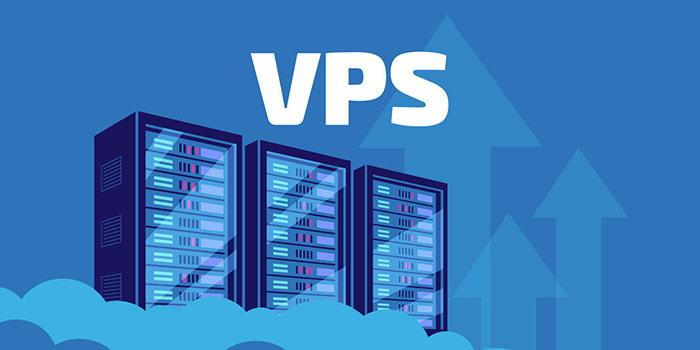-
Table of Contents
Edge Computing: Redefining Data Processing in a Decentralized World
Edge computing is a paradigm that aims to redefine data processing in a decentralized world. It involves bringing computation and data storage closer to the source of data generation, rather than relying on centralized cloud servers. By processing data at the edge of the network, closer to where it is generated, edge computing offers several advantages such as reduced latency, improved bandwidth efficiency, enhanced security, and increased autonomy. This approach is particularly beneficial in scenarios where real-time data analysis, low latency, and reliable connectivity are crucial, such as in Internet of Things (IoT) applications, autonomous vehicles, and industrial automation. Overall, edge computing is revolutionizing the way data is processed, enabling faster and more efficient decision-making in a decentralized environment.
The Benefits of Edge Computing in IoT Applications
Edge Computing: Redefining Data Processing in a Decentralized World
The rapid growth of the Internet of Things (IoT) has brought about a massive influx of data that needs to be processed and analyzed in real-time. Traditional cloud computing models, while effective in many ways, are not always the most efficient solution for handling the sheer volume and velocity of data generated by IoT devices. This is where edge computing comes into play, offering a decentralized approach to data processing that brings numerous benefits to IoT applications.
One of the key advantages of edge computing is its ability to reduce latency. In traditional cloud computing, data is sent to a centralized server located far away from the source, resulting in delays in processing and response times. With edge computing, however, data processing is moved closer to the source, allowing for faster response times and reduced latency. This is particularly crucial in time-sensitive applications such as autonomous vehicles or industrial automation, where even a slight delay can have significant consequences.
Another benefit of edge computing is improved reliability. By distributing data processing across multiple edge devices, the risk of a single point of failure is greatly reduced. In a centralized cloud computing model, if the server goes down, all connected devices are affected. In contrast, with edge computing, each device operates independently, ensuring that even if one device fails, the others can continue to function. This decentralized approach enhances the overall reliability and resilience of IoT applications.
Edge computing also offers enhanced security and privacy. With data being processed locally on edge devices, sensitive information can be kept within the confines of the device itself, reducing the risk of data breaches or unauthorized access. This is particularly important in industries such as healthcare or finance, where data privacy and security are of utmost importance. By minimizing the need to transmit data to a centralized server, edge computing helps protect sensitive information and ensures compliance with data protection regulations.
Scalability is another advantage of edge computing. As the number of IoT devices continues to grow exponentially, traditional cloud computing models may struggle to handle the increasing demand for processing power and storage. Edge computing allows for the distribution of processing capabilities across a network of edge devices, enabling seamless scalability as more devices are added to the network. This flexibility ensures that IoT applications can adapt and scale to meet the evolving needs of businesses and consumers.
Furthermore, edge computing can significantly reduce bandwidth requirements. By processing data locally on edge devices, only relevant information needs to be transmitted to the cloud, reducing the amount of data that needs to be transferred. This not only reduces bandwidth costs but also alleviates network congestion, resulting in improved overall network performance. In scenarios where network connectivity is limited or unreliable, edge computing becomes even more valuable, as it allows for local processing and analysis without relying heavily on cloud connectivity.
In conclusion, edge computing is revolutionizing data processing in the decentralized world of IoT applications. Its ability to reduce latency, improve reliability, enhance security and privacy, enable scalability, and reduce bandwidth requirements make it an ideal solution for handling the massive amounts of data generated by IoT devices. As the IoT ecosystem continues to expand, edge computing will play a crucial role in enabling efficient and effective data processing at the edge of the network.
Edge Computing: Enhancing Real-Time Data Analytics
Edge Computing: Redefining Data Processing in a Decentralized World
In today’s fast-paced digital landscape, the need for real-time data analytics has become increasingly crucial. Businesses and organizations rely on timely insights to make informed decisions, optimize operations, and deliver personalized experiences to their customers. However, traditional cloud computing architectures often struggle to meet the demands of processing and analyzing vast amounts of data in real-time. This is where edge computing comes into play, revolutionizing the way data is processed and enabling enhanced real-time data analytics.
Edge computing is a distributed computing paradigm that brings data processing closer to the source of data generation, reducing latency and improving response times. Unlike traditional cloud computing, where data is sent to a centralized data center for processing, edge computing leverages a network of decentralized devices, such as edge servers, gateways, and IoT devices, to process data at or near the edge of the network. This decentralized approach allows for faster data processing and analysis, making it ideal for applications that require real-time insights.
One of the key advantages of edge computing is its ability to handle the massive amounts of data generated by IoT devices. With the proliferation of connected devices, such as sensors, cameras, and wearables, the volume of data being generated is growing exponentially. By processing this data at the edge, near the devices themselves, edge computing reduces the need for data to be transmitted to a centralized location for processing. This not only reduces latency but also alleviates the strain on network bandwidth, making it more efficient and cost-effective.
Furthermore, edge computing enables real-time data analytics by allowing organizations to analyze data as it is being generated. This is particularly valuable in applications where immediate action is required, such as autonomous vehicles, industrial automation, and smart cities. By processing data at the edge, organizations can quickly identify patterns, detect anomalies, and make timely decisions based on real-time insights. This not only improves operational efficiency but also enhances safety and security in critical environments.
Another benefit of edge computing is its ability to operate in disconnected or low-bandwidth environments. In scenarios where network connectivity is limited or unreliable, edge computing ensures that data processing and analytics can still be performed locally. This is especially important in remote locations, such as oil rigs, mining sites, or disaster-stricken areas, where access to the cloud may be limited. By bringing data processing capabilities to the edge, organizations can continue to derive value from their data, even in challenging environments.
However, while edge computing offers numerous advantages, it also presents some challenges. One of the main challenges is the need for robust security measures. With data being processed and stored at the edge, organizations must ensure that sensitive information is adequately protected. This requires implementing strong encryption, access controls, and intrusion detection systems to safeguard data from unauthorized access or tampering.
Additionally, managing a distributed network of edge devices can be complex and resource-intensive. Organizations need to deploy and maintain edge servers, gateways, and IoT devices, ensuring they are properly configured, updated, and monitored. This requires a comprehensive management strategy that includes remote device management, software updates, and proactive monitoring to ensure the reliability and performance of the edge infrastructure.
In conclusion, edge computing is redefining data processing in a decentralized world. By bringing data processing closer to the source, edge computing enables enhanced real-time data analytics, reduces latency, and improves response times. It empowers organizations to process and analyze massive amounts of data generated by IoT devices, enabling timely insights and informed decision-making. However, it also presents challenges, such as security and device management. As the digital landscape continues to evolve, edge computing will play a crucial role in enabling organizations to harness the power of real-time data analytics and drive innovation in a decentralized world.
Edge Computing vs. Cloud Computing: Understanding the Differences
Edge Computing: Redefining Data Processing in a Decentralized World
In today’s digital age, where data is generated at an unprecedented rate, the need for efficient and fast data processing has become paramount. Traditional methods of data processing, such as cloud computing, have served us well, but they are not without their limitations. This is where edge computing comes into play, offering a new approach to data processing that is redefining the way we handle and analyze data in a decentralized world.
To understand the differences between edge computing and cloud computing, it is important to first grasp the basic concepts of each. Cloud computing, as the name suggests, involves the use of remote servers to store, manage, and process data. This centralized approach has been the go-to solution for many organizations, as it offers scalability, cost-effectiveness, and ease of access. However, it also comes with its fair share of challenges.
One of the main drawbacks of cloud computing is latency. Since data has to travel back and forth between the user and the remote server, there is often a delay in processing and retrieving information. This can be a significant issue in applications that require real-time data analysis, such as autonomous vehicles or industrial IoT systems. Additionally, the reliance on a centralized infrastructure makes cloud computing vulnerable to network outages or security breaches, which can have severe consequences for businesses.
This is where edge computing steps in. Edge computing brings data processing closer to the source of data generation, reducing latency and improving response times. Instead of relying solely on remote servers, edge computing utilizes local devices, such as routers, gateways, or even IoT devices, to process and analyze data in real-time. By distributing the workload across multiple devices, edge computing enables faster decision-making and reduces the strain on the network.
Another advantage of edge computing is its ability to operate offline. Unlike cloud computing, which requires a constant internet connection, edge computing can function even in remote or disconnected environments. This is particularly beneficial in industries such as oil and gas, mining, or agriculture, where reliable internet connectivity may not always be available. By processing data locally, edge computing ensures that critical operations can continue uninterrupted, regardless of the network status.
Furthermore, edge computing offers enhanced data privacy and security. With cloud computing, data is often transmitted and stored in remote servers, raising concerns about data breaches and unauthorized access. In contrast, edge computing keeps sensitive data within the local network, reducing the risk of exposure. This is especially important in industries that deal with sensitive information, such as healthcare or finance, where data privacy is of utmost importance.
In conclusion, edge computing is revolutionizing the way we process and analyze data in a decentralized world. By bringing data processing closer to the source, edge computing offers faster response times, reduced latency, and improved reliability. It also addresses concerns regarding data privacy and security, making it an attractive option for industries that deal with sensitive information. While cloud computing still has its place in certain applications, edge computing is undoubtedly reshaping the future of data processing. As technology continues to advance, it will be fascinating to see how edge computing evolves and transforms various industries, unlocking new possibilities and opportunities along the way.In conclusion, edge computing is redefining data processing in a decentralized world. It brings data processing closer to the source of data generation, reducing latency and improving efficiency. By distributing computing power to the edge of the network, edge computing enables real-time data analysis and decision-making, making it ideal for applications that require low latency and high responsiveness. It also enhances data privacy and security by minimizing the need for data transmission to centralized cloud servers. Overall, edge computing is revolutionizing the way data is processed, enabling new possibilities and applications in various industries.



